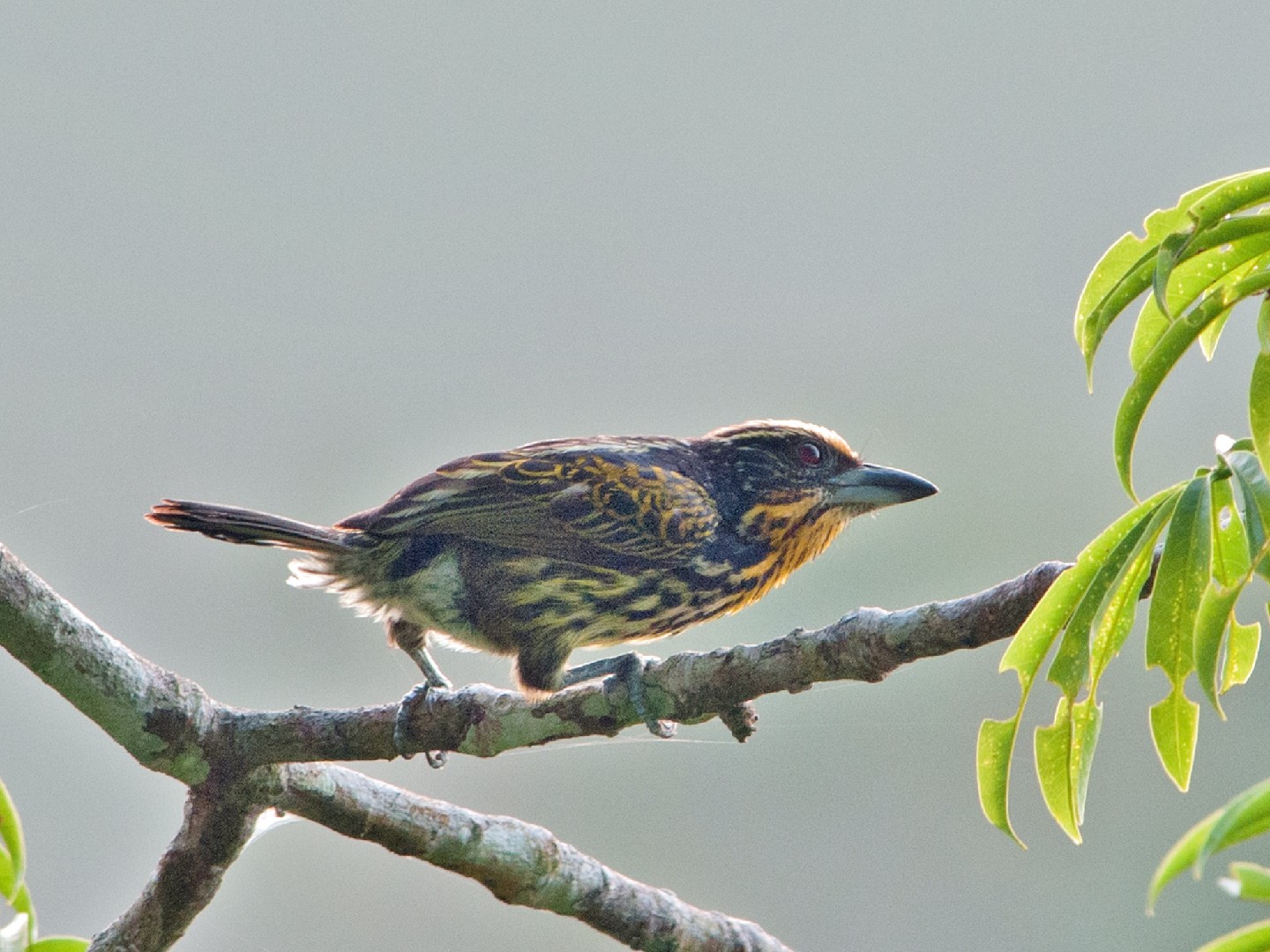Gilded Barbet
A species of Gray-billed New World Barbets Scientific name : Capito auratus Genus : Gray-billed New World Barbets
Gilded Barbet, A species of Gray-billed New World Barbets
Botanical name: Capito auratus
Genus: Gray-billed New World Barbets
Content
Description General Info
Description
It has a total length of c. 20 cm (8 in). As other New World barbets, the gilded barbet is a thickset, relatively large-headed bird with a stubby bill. The upperparts, tail, wings and mask are mainly black. The spotty bar over the greater wing coverts, narrow edging to the remiges and tips to the tertials are yellow. Additionally, the narrow yellow eyebrows extends as two parallel lines over the mantle. The belly is mainly pale yellow with black streaking to the flanks. Depending on subspecies, the throat ranges from red to orange, and the crown ranges from deep yellow over brownish-orange to reddish-orange. The female resembles the male, but with extensive orange-yellow edging to the wing-coverts, yellowish streaking to the auriculars and back, and the black streaking of the flanks also extending over the chest. In females from the westernmost part of its range (subspecies punctatus), the throat is streaked black. Both sexes have dark maroon irides, greyish legs and a broadly black-tipped grey bill. 
Nest Placement
Cavity
Feeding Habits
Gilded Barbet primarily consumes various fruits, making up 80% of their diet, with a preference for ripe fruits. They also feed on insects and occasionally nectar. Unique adaptations include probing and tapping for insects. Generally solitary, gilded Barbet joins mixed-species flocks in diverse foraging methods, including hanging and reaching.
Habitat
The gilded Barbet thrives in tropical moist lowland and lower montane forests, which encompass floodplain and terra firme forests, riverine environments, and secondary growth areas. The species adapts to a variety of forest types extending through the Orinoco and western Amazon Basins. Habitats include forest edges, clearings, as well as human-altered areas like gardens and plantations, with an elevational range up to 1700 meters.
Dite type
Frugivorous
General Info
Feeding Habits
Bird food type

Fruit
Distribution Area
It is found in Bolivia, Brazil, Colombia, Ecuador, Peru, and Venezuela, in the Orinoco River Basin and western Amazon Basin. It was formerly considered a subspecies of the black-spotted barbet from north-eastern South America. Its natural habitats are tropical moist lowland forests and woodland. It mainly occurs in lowlands, but also ranges into the lower foothills of the eastern Andes. It is largely frugivorous. 
Species Status
Not globally threatened.
